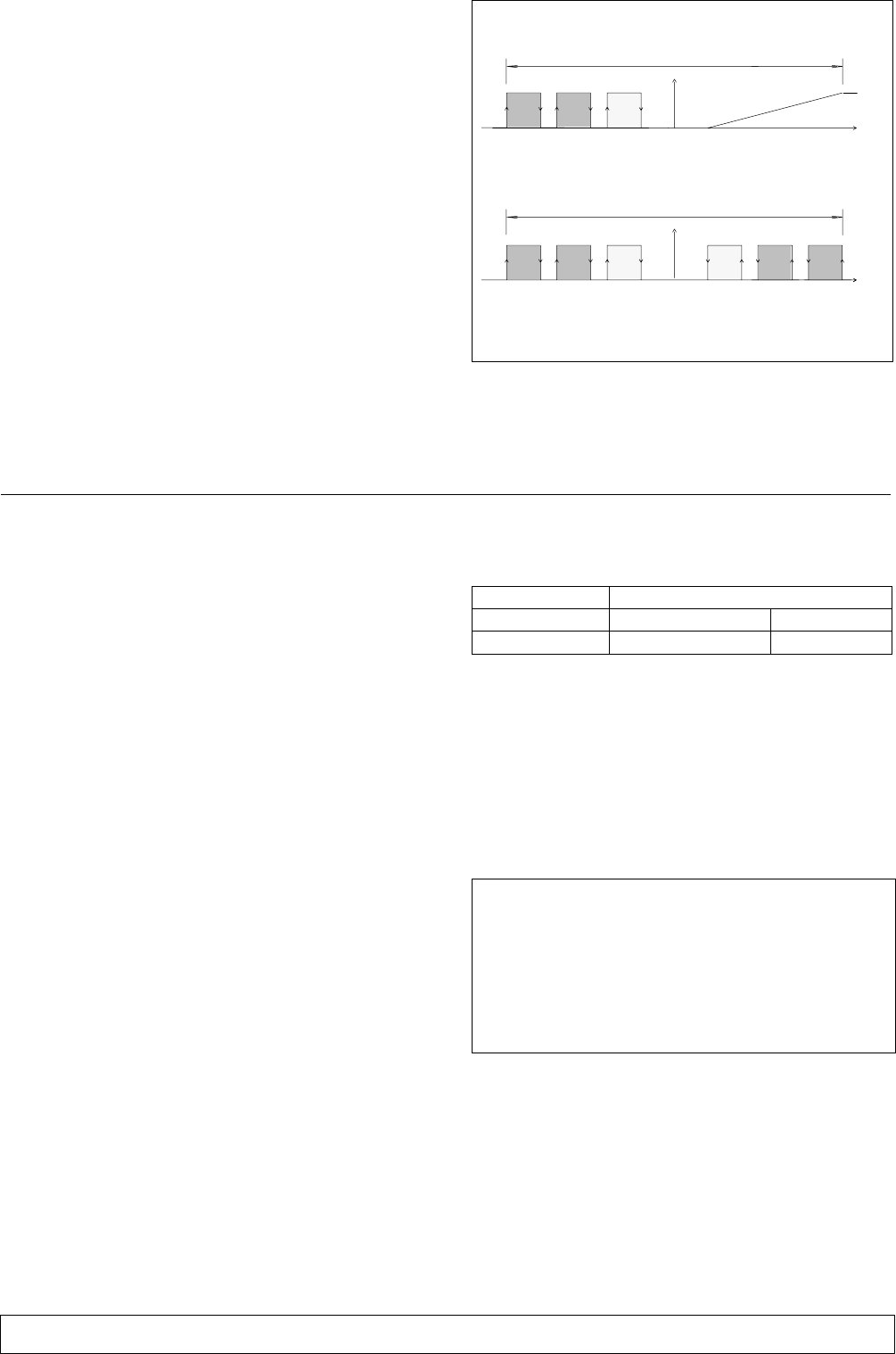
page 7
English
6.1.4 - Unit in stand-by
The control of the unit in stand-by is completely autoĆ
matic thanks to the possibility to connect the Microface
control.
A unit in stand-by starts in the event of an alarm which
stops the main unit; this occurs even if the main unit is
switched off or disappears from the system due to a fault
on the control connecting bus.
The rotation per hour of the units in stand-by occurs
automatically every 24 hours, so as to allow a homogeĆ
neous wear of the system components.
If the system is connected to the Hiromatic interface, it is
possible to set a different rotation control.
If several units are simultaneously working with the same
set point, the temperature used for the control is the
average of the detected ones; further, in the operation
with compressor, the proportional band is divided in as
many parts as twice the number of units belonging to the
system, so as to shut the total available refrigerating
capacity.
The operation in Freecooling mode is homogeneous and
simultaneous on all units.
Fig. b, shown as an example, describes the operation of a
system consisting of 3 units.
Fig. b System with 2 units in stand-by -
Microface control
Set _CCoolingHeating
3
Freecooling mode
1
2
3
Compressor cooling mode
11
223
P Band
P Band
Set _CCoolingHeating
1 = main unit
2 = unit in stand-by
3 = unit in stand-by
7 - Refrigerant R22 and oil charge
THESE OPERATIONS MUST BE PERFORMED BY
AN EXPERIENCED REFRIGERATION TECHNIĆ
CIAN.
7.1 - Features of the refrigerating fluid R22
At standard temperature and pressure it is a colourless gas
with low toxicity, non-flammable, and it has an allowed
exposure limit value (AEL/TLV) corresponding to 1000
ppm (average value measured on 8 hours/day). In the
event of leakage, air the room before use.
7.2 - Refrigerant charge
WHEN REPAIRING THE REFRIGERATION CIRĆ
CUIT RECUPERATE ALL REFRIGERANT IN A CONĆ
TAINER: DO NOT ALLOW IT TO ESCAPE.
1) Start the unit as described in par. 4.1.
2) Start the compressor manually.
3) Guarantee a constant condensation temperature
(preferably 42-45°C); if necessary, partially obstruct
the condenser coil surface or limit its ventilating
power to obtain these conditions.
4) Charge the unit with the quantity of refrigerant R22
as shown in Tab. 5 and wait until the operating condiĆ
tions of the whole refrigeration circuit are normal.
5) Check that the overheating is 7-8°C.
Tab. 5 - Refrigerant charge
MODEL
PKS3 PKS4
Refrigerant charge (g)
1500 1700
7.3 - Oil charge
The oil to be used when topping up is SUNISO 3GS; if
SUNISO 3GS is unavailable use an oil with the same
characteristics (see Tab. 6).
NEVER MIX DIFFERENT OILS TOGETHER.
CLEAN THE PIPING COMPLETELY BEFORE
CHANGING THE TYPE OF OIL USED.
Tab. 6 - Suniso 3GS oil (standard)
approx. specific weight (at 15_C)
flash point (C.O.C.)
pour point
ENGLER viscosity at 50 _C
viscosity index
copper corrosion (100 _C, 3 hours) ASTM D130
neutralization value
conradson carbon residue
dielectric strength
:
:
:
:
:
:
:
:
:
0.91 kg/l
170 _C
-40 _C
2.7 E
0
1
0.03 max.
0%
> 30 kV


















